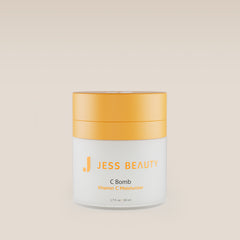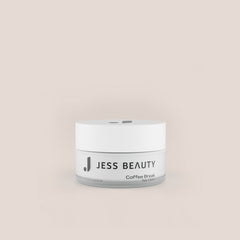You may have seen small yellow or white bumps on your skin. This is not a coincidence, as a matter of fact about 40 to 50% of the US population have milia cysts. These bumps are not harmful to your skin health, they will go away on their own. So what’s the problem? We just don’t like how they look? Yes and no. Yes: we are not used to this and can be frustrating for some people. But that’s not it, Milia Cysts are a symptom.
Our skin is trying to tell us something! Want to know more? Keep reading.

What are milia cysts?
Milium is a single cyst that appears mostly on the face under the eyes or nose area. of checks. The group of milium cysts is called milia. Milia are created when strong protein components such as keratin are found in the skin tissues.
This cyst can occur to anyone of any skin type or age. However, they are more common among newborns.
Types of Milia
There are two types of Milia Cyst:
-
Primary Milia: They can happen to adults but are more common in infants. They are typically found on the face, particularly on the cheeks, nose, and eye area.
- Secondary Milia: They can arise anywhere on the body and are brought on by burns or skin trauma.
Causes Of Milia Cysts
The body naturally eliminates dead skin cells to make place for new ones. However, these dead cells sometimes do not shed correctly and become stuck beneath the surface, resulting in this small lump on the skin called milia.
Now, we said that these cyst are symptoms… of what?
-
Damaged skin due to rash or injury.
-
Slowing down the skin's natural exfoliation process, mature skin may be more prone to producing milia.
-
Sun exposure and sunburn.
-
Heavy steroid creams have been used for a long time.
-
Not follow any skincare routine
-
Not cleaning your face before bedtime.
-
Lots of makeup or cosmetic products.
-
Not enough sleep.
-
The fast production of rejuvenation can cause excess keratin and these keratins are the main reason for building milia cysts.
- Laser treatments may cause harm to the skin, resulting in milia when the skin recovers.
10 Ways To Prevent Milia Cysts?
Some of the recently mentioned causes can be avoided. By practicing proper skincare routine that includes exfoliation and cleansing, milia cysts can be prevented.
1st: Cleansing
Always clean your face in the morning and evening. Use a gentle, paraben-free face wash regularly. This will prevent clogging your pores.
2nd: Steaming
Additionally, you might add steam treatments once or twice a week to keep your skin's pores open and moisturized. Pamper yourself with steam in the bathroom for five to eight minutes. After that, pat dry and rinse with warm water to remove any irritations.
3rd: Eye cream
Use an eye cream to stop clogging. Many dermatologists recommend adding an eye cream to your skin care routine rather than applying face moisturizer near the eye area.
Try using a light, bouncy-textured eye cream that absorbs swiftly into the skin without leaving a film on the surface.
4rd: Moisturizer
Using a moisturizer can help your skin stay soft and smooth so that dead skin cells can regenerate naturally by themself. In Jess Beauty, we recommend using a hyaluronic-based moisturizer or Vitamin C moisturizer to keep skin hydrated.
5th: Using SPF Broad Spectrum
Milia may occur as a result of excessive sun exposure. Your skin turns leathery, which makes it more difficult for dead cells to shed. Wearing sunscreen creates a protective shield for your body and face. Choose a sunscreen that isn't overly thick and won't clog your pores to avoid milia.
Look for a sunscreen with an SPF of 30 or above. If your skin is extremely sensitive to the sun, try using a product with an SPF of 100. Mineral oil is the most skin-friendly base for sunscreens, as opposed to other oils that might clog the skin.
6th Step: Avoided Heavy Steroid Creams
Another reason for blocked pores, which cause cysts, is using heavy, thick steroid creams. These can irritate your skin and also prevent natural exfoliation.
7th: Add a retinol in skincare
Research shows that it works great for preventing and eliminate milia cyst because of its exfoliant properties.
After cleaning your face, pat down to dry, and apply retinol on your face. It is recommended to apply sunscreen everyday, especially after using retinol the night before because this ingredient may affect your skin's vulnerability to sun-induced skin damage.
8th: Avoid picking milia bumps
As an adult, if you have milia, don't pick or remove milia, as this can cause bleeding, scabbing, scarring, and infection.
9th. Try a facial Peel
Another way to use exfoliants is to use facial peels that contain exfoliating chemicals since they may also be helpful. Moreover, when using facial peel products, you must choose a mild form of chemical because strong peels can lead to more milia.
It's probably okay to carry on with your skin care regimen if you've already been utilizing facial peels.
Choose only peels that contain glycolic or salicylic acid. Don't use face peels to treat milia pimples if you're new to the procedure. You may be allergic to some of the components in face peels, which may make milia worse.
10th. Change Your Lifestyle
Lastly, think about making changes in lifestyle that can aid in the prevention of milia. Trying to limit cholesterol-rich foods (such as meat and eggs), incorporating vitamin D supplements. Use mineral based cosmetics or makeup that all help in preventing milia cysts.
Final Thought
Milia (small yellow-white bumps) in infants occur naturally and resolve on their own; however, in adults, they are due to cosmetic issues, and they develop when you don't follow a skincare routine. Take the first step toward radiant, cyst-free skin with JessBeauty's trusted skin care products, and transform your complexion and gain confidence today.









